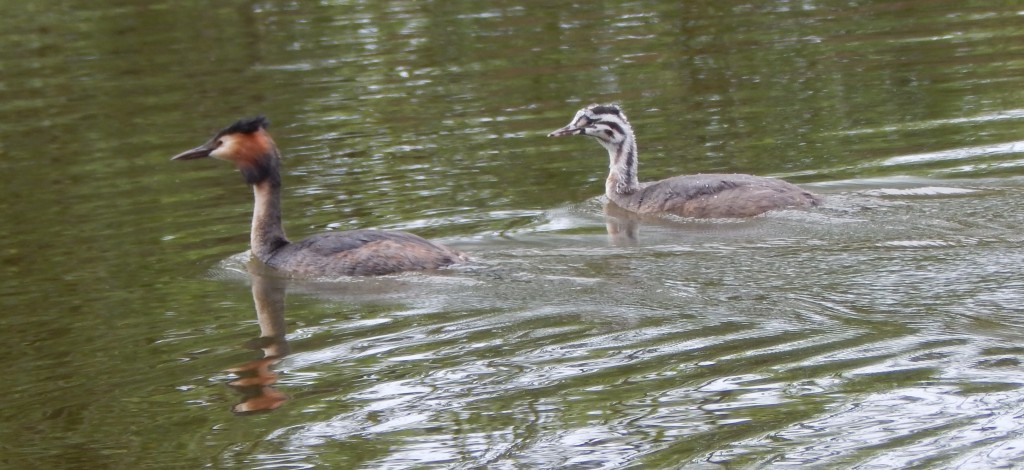
[273] Podiceps cristatus, Great Crested Grebe
Introduction
Podiceps cristatus, the Great Crested Grebe, is the most common type of Grebe seen in the UK. They are so well adapted to the water that you are very unlikely to see them on land or in flight – but they are not waterfowl.
Taxonomy
Kingdom – Animals
Phylum – Chordates
Class – Aves (Birds)
Clade – Mirandornithes (Flamingoes and Grebes)
Order – Podicipediformes (Grebes)
Family – Podicipedidae (Grebes)
Genus – Podiceps
Scientific Name – Podiceps cristatus
Name
Grebe is an old French word of unknown origin for this bird. It is worth noting that any species called Great may not be the largest but it’s probably one of the largest. Any species called Crested is not necessarily the only species with a crest. In the UK the Great Crested Grebe is a lot bigger than the Little Grebe.
Podiceps comes from Ancient Greek roots meaning vent-foot, because of the location of its legs. Cristatus is Latin for crested.
Grebes
Grebes look as if they might be similar to ducks. They are the same sort of size and live on inland water. But they are not in the order Anseriformes that consists mainly of ducks, geese and swans. Similarly, they are not related to [152] Coots and [157] Moorhens. They form a group of birds that is not clearly linked to other groups.
There are superficial similarities with Divers, (called Loons in America,) sea-dwelling birds that will not appear in this blog. But the similarities may represent convergent evolution, where unrelated groups have evolved to look similar.
DNA analysis and morphological studies suggest that their closest relatives are Flamingoes! These two groups have diverged much in appearance and lifestyle.
Grebes are water dwelling birds that have lobed feet and are excellent swimmers and divers. Their legs, designed for water rather than land, are set so far back that they cannot walk easily without falling over.

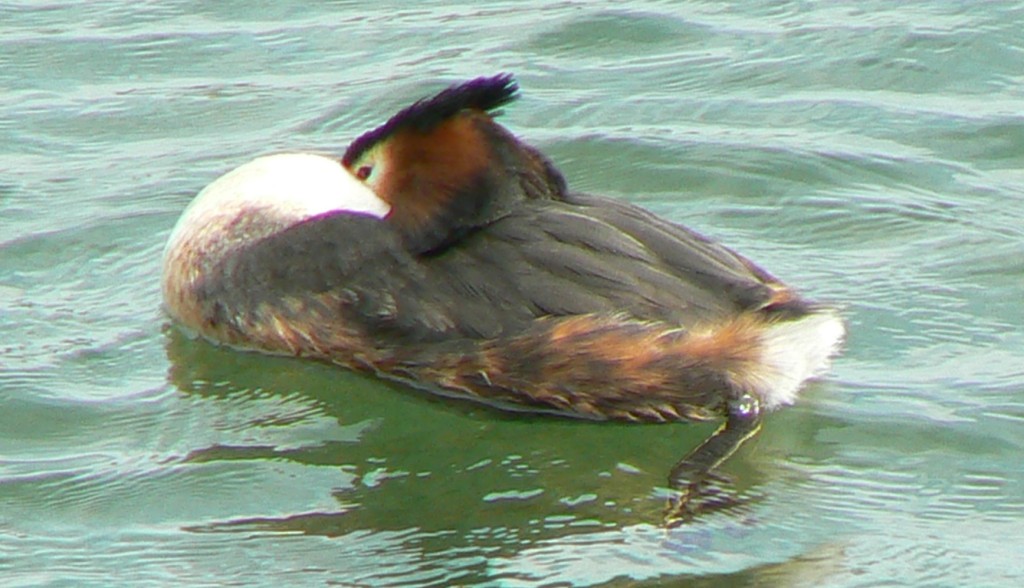
Apart from their nests, which may be floating, they keep to the water. They may dive to avoid danger rather than fly away. Young birds are able to swim and dive almost as soon as they are born.
There are about half a dozen species of Grebe sometimes seen in the UK but only two are at all common.
Description
Podiceps cristatus is one of the most attractive birds seen on water. It has a long, slender white-fronted neck. The rear of the head is a tawny orange brown, becoming darker at the neck. its cheeks are white and the head has a flat black top, often displayed or windswept as a crest. The pointed bill is a metallic dark or pinkish colour leading to a striking red eye. Its dark grey back may have a mottled appearance.

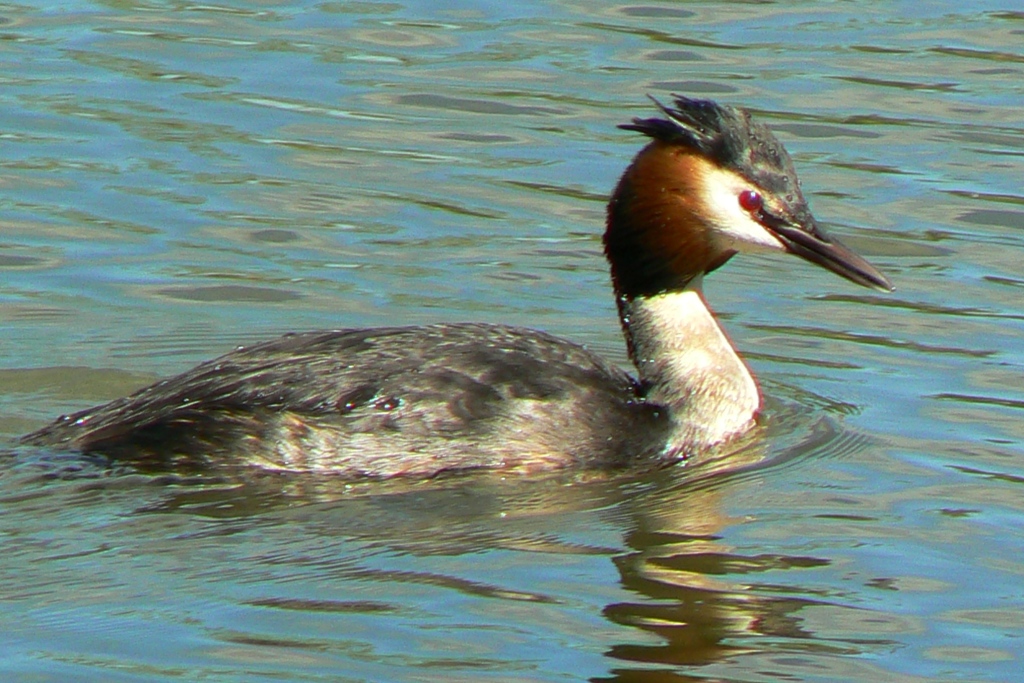
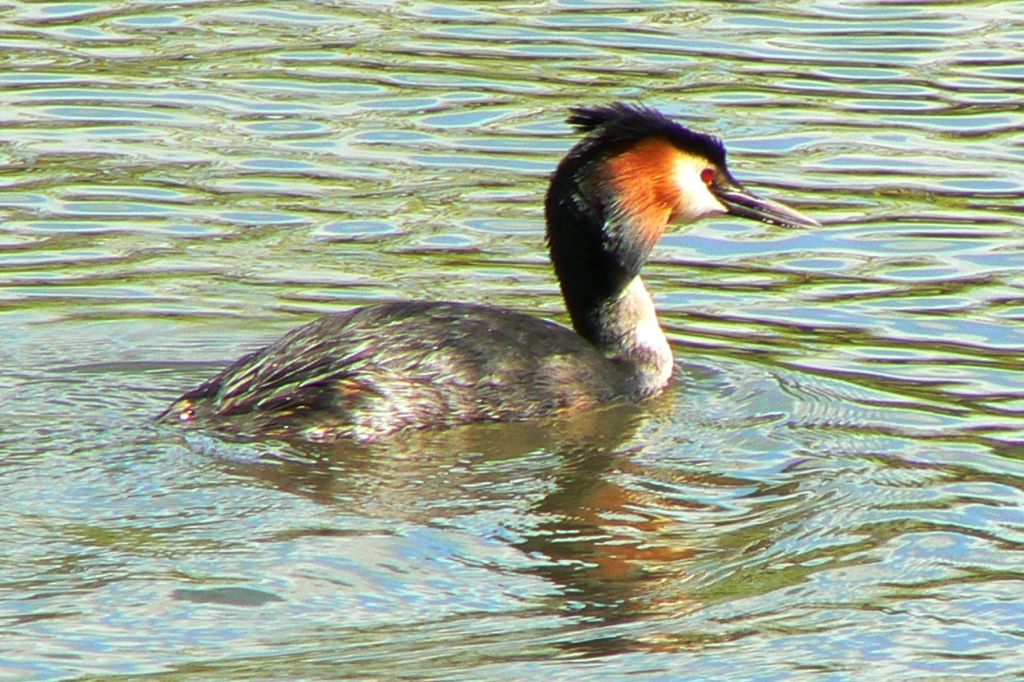
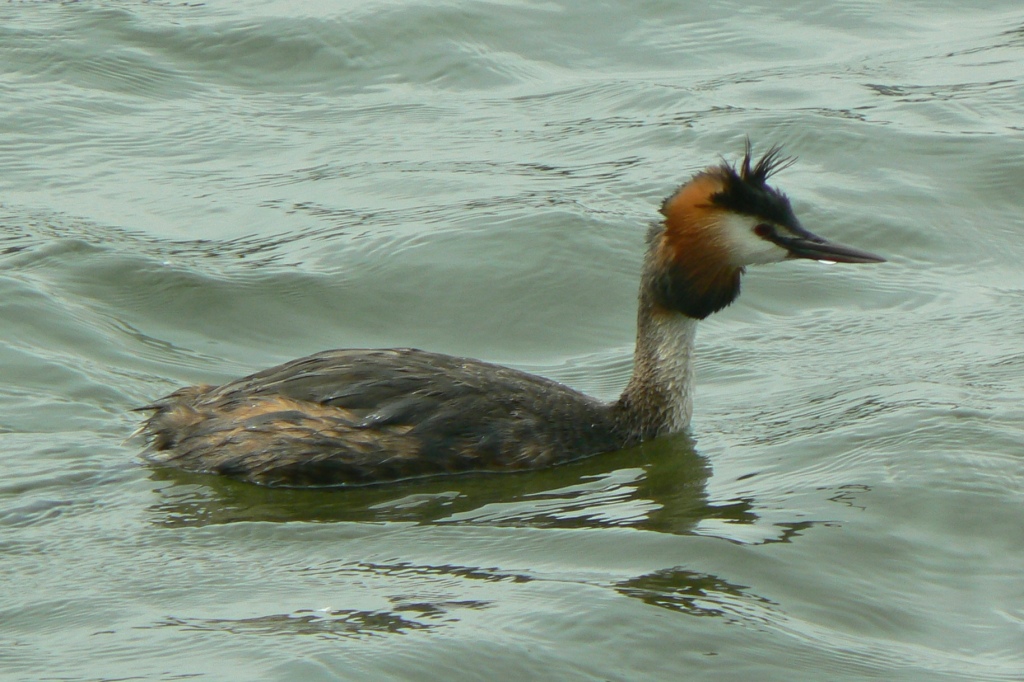
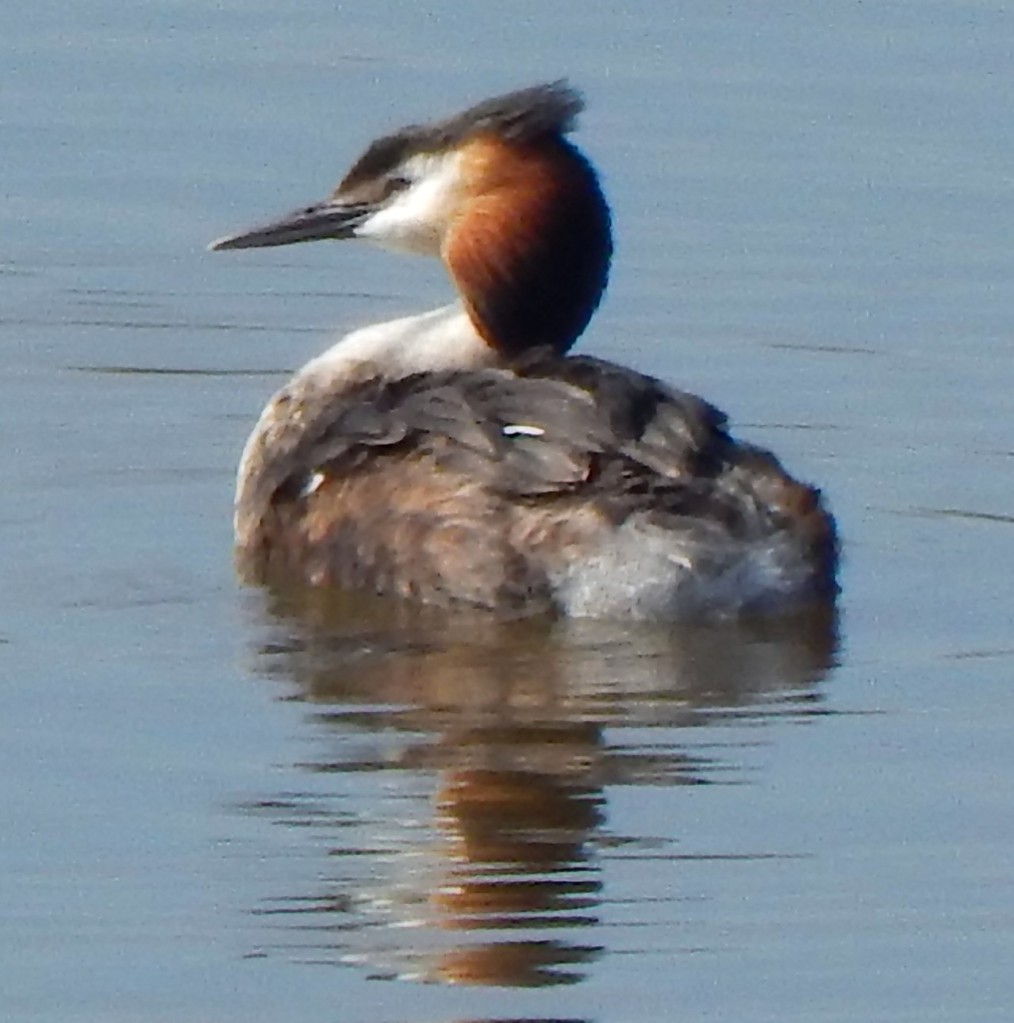
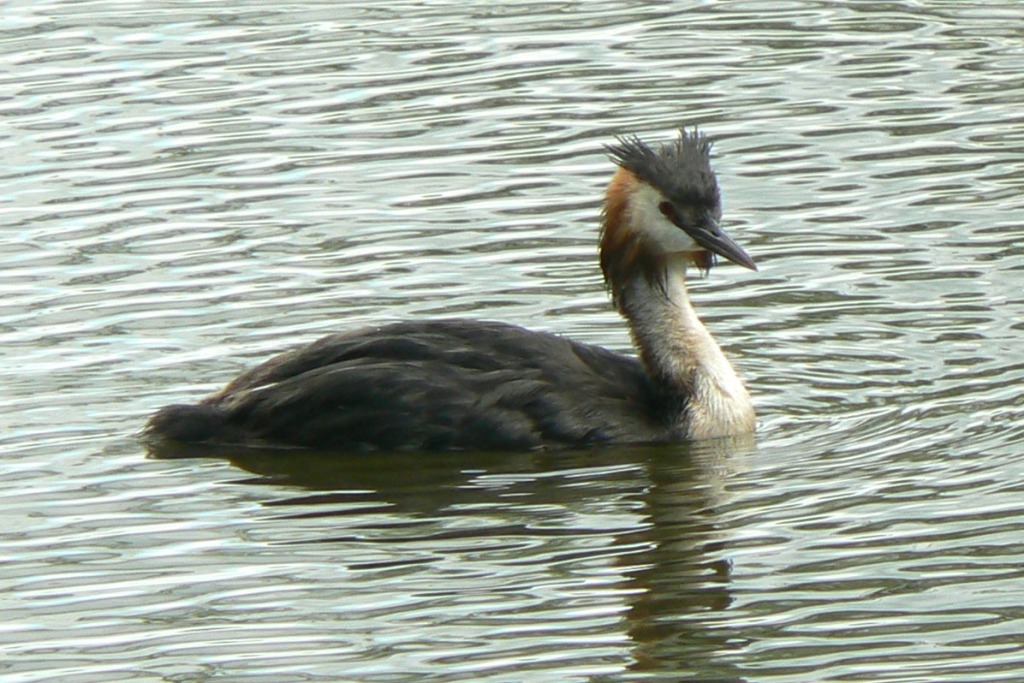

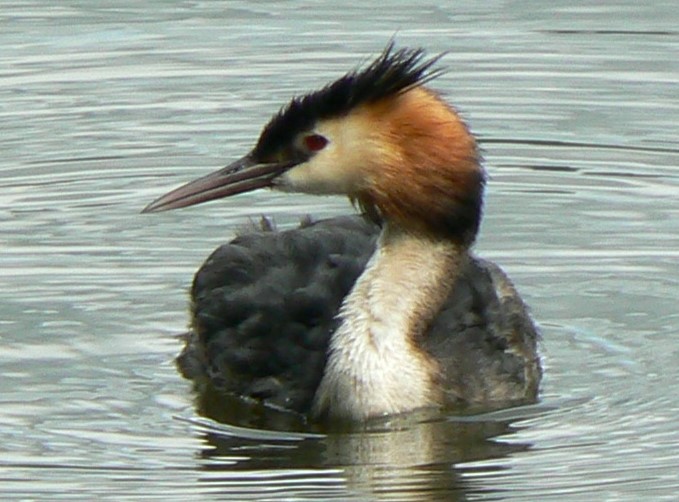
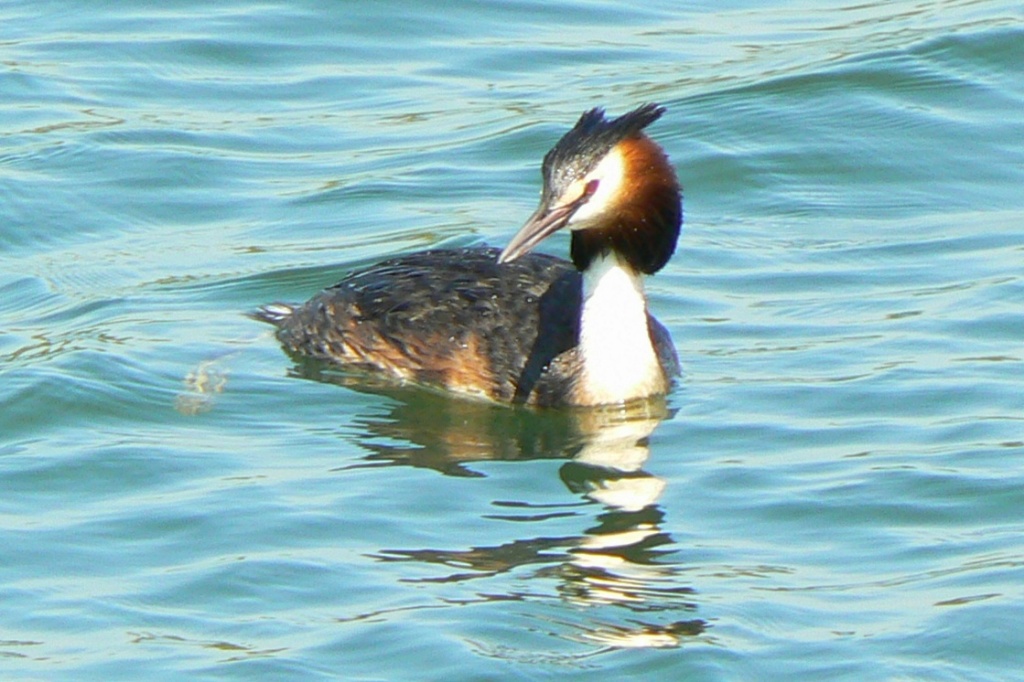
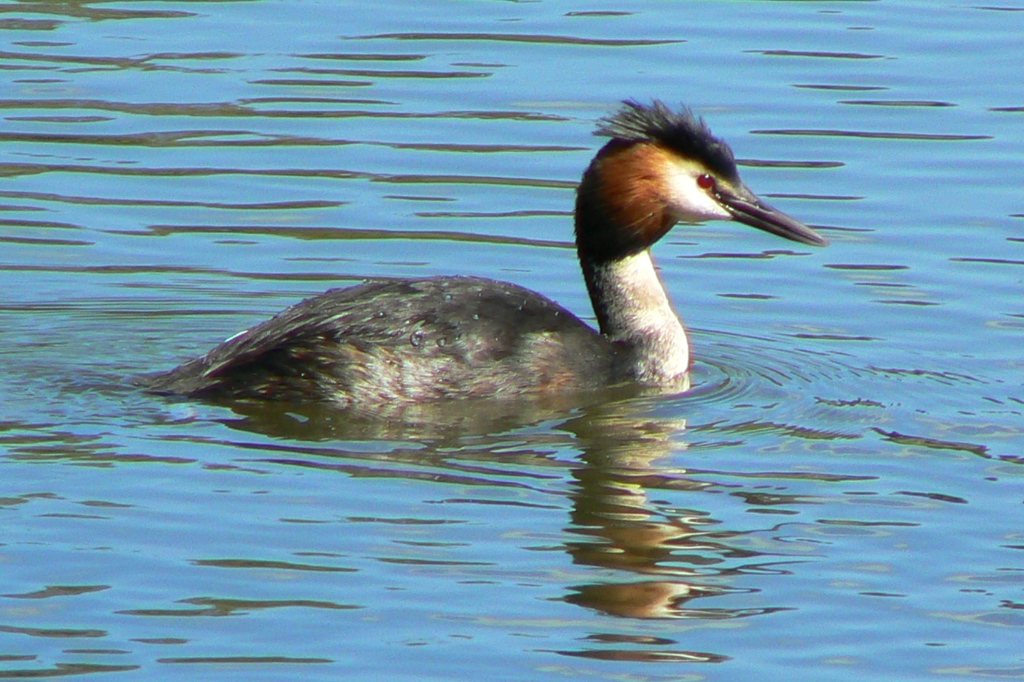
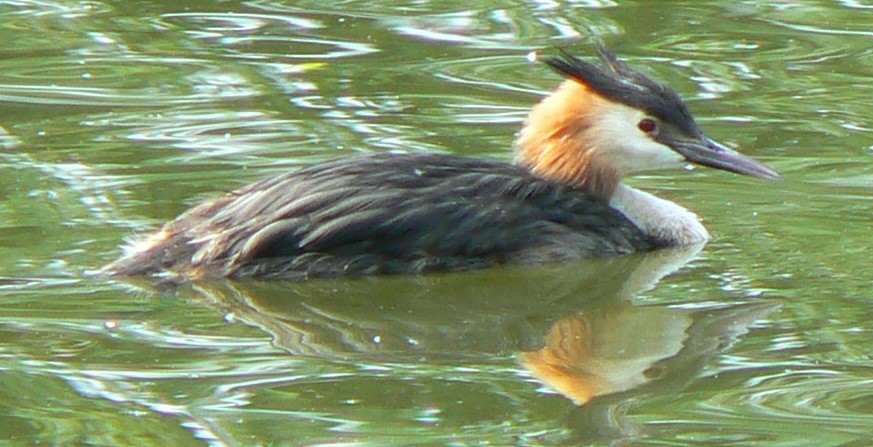
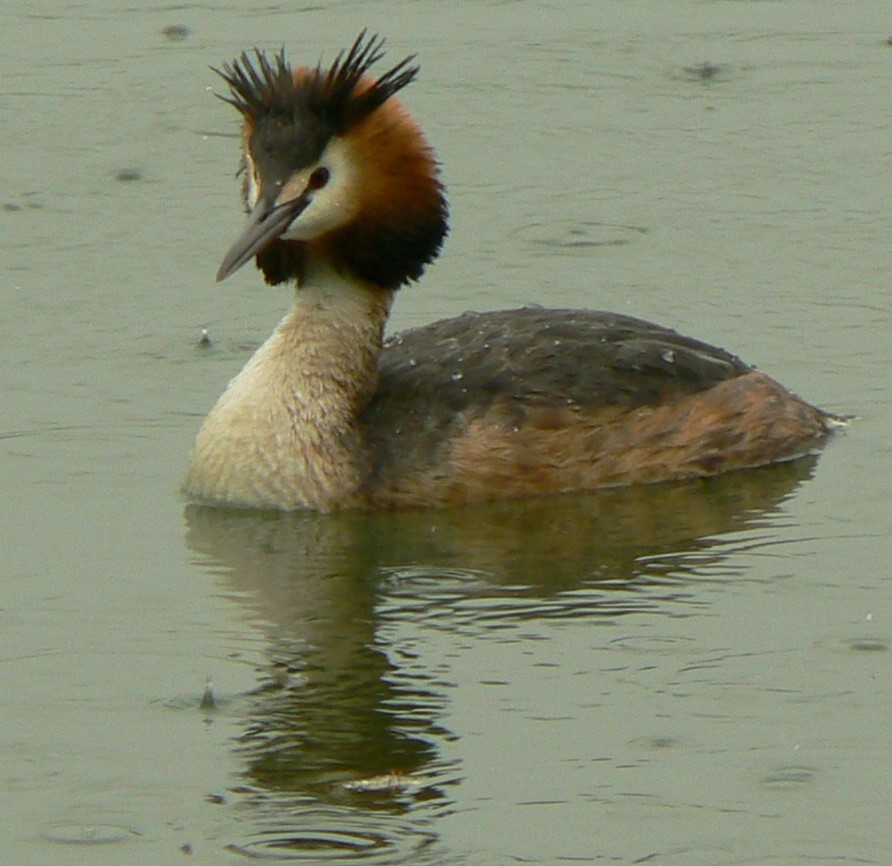
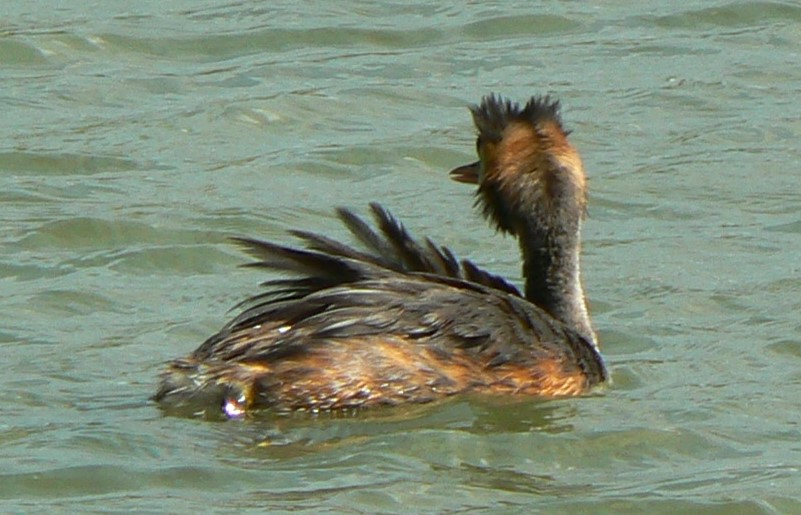
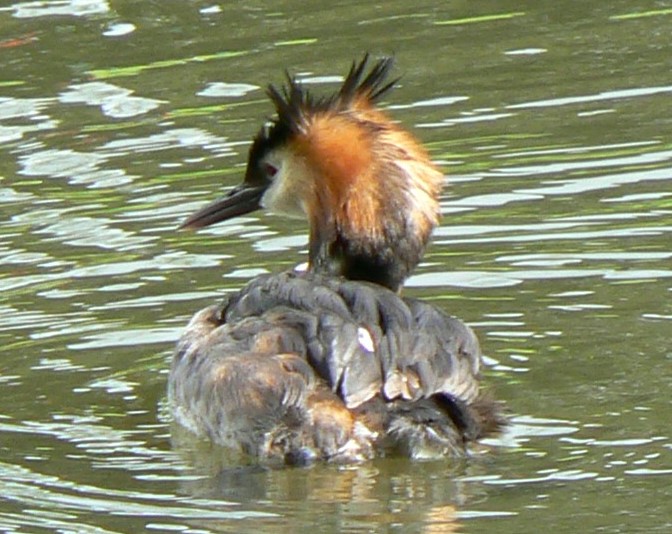
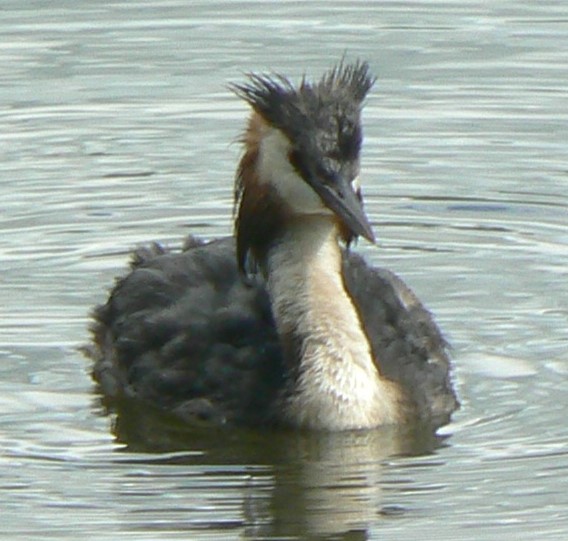
When swimming it can be so low in the water that some or all of the back is submerged.
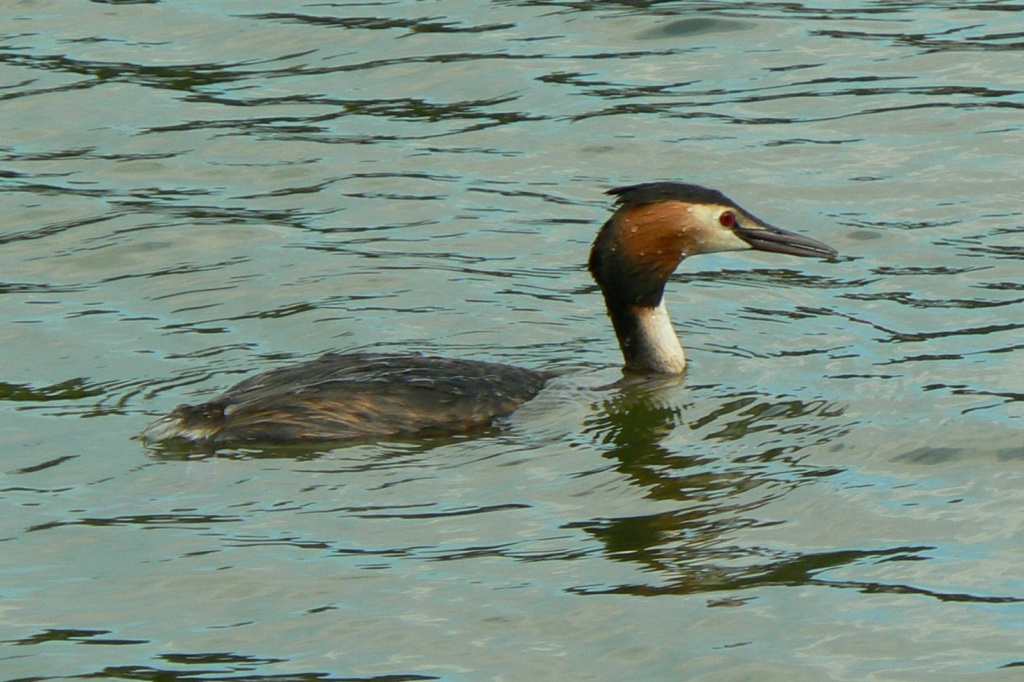


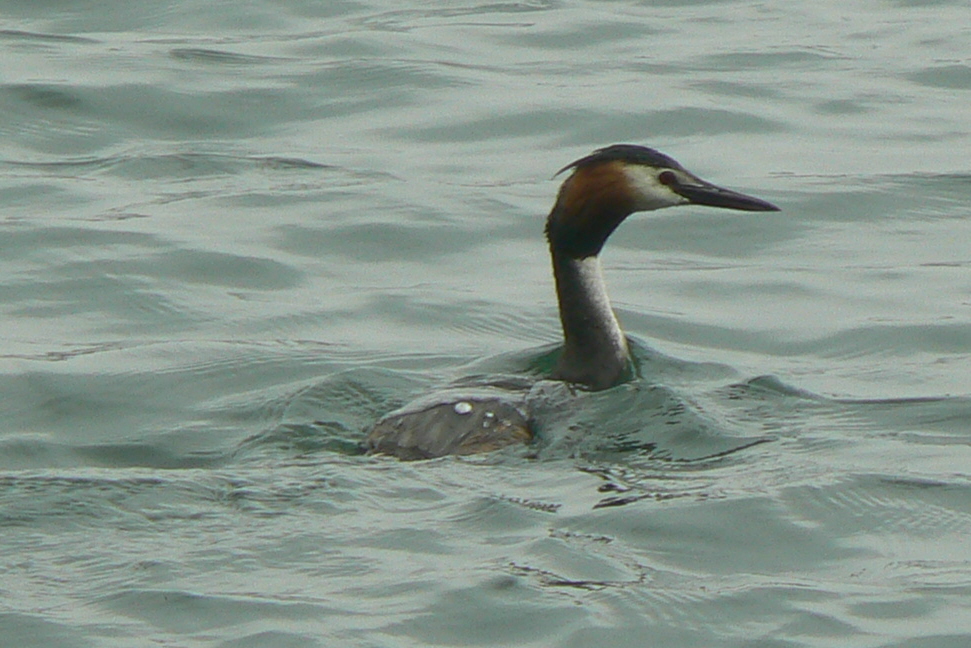
Male and female birds are identical.

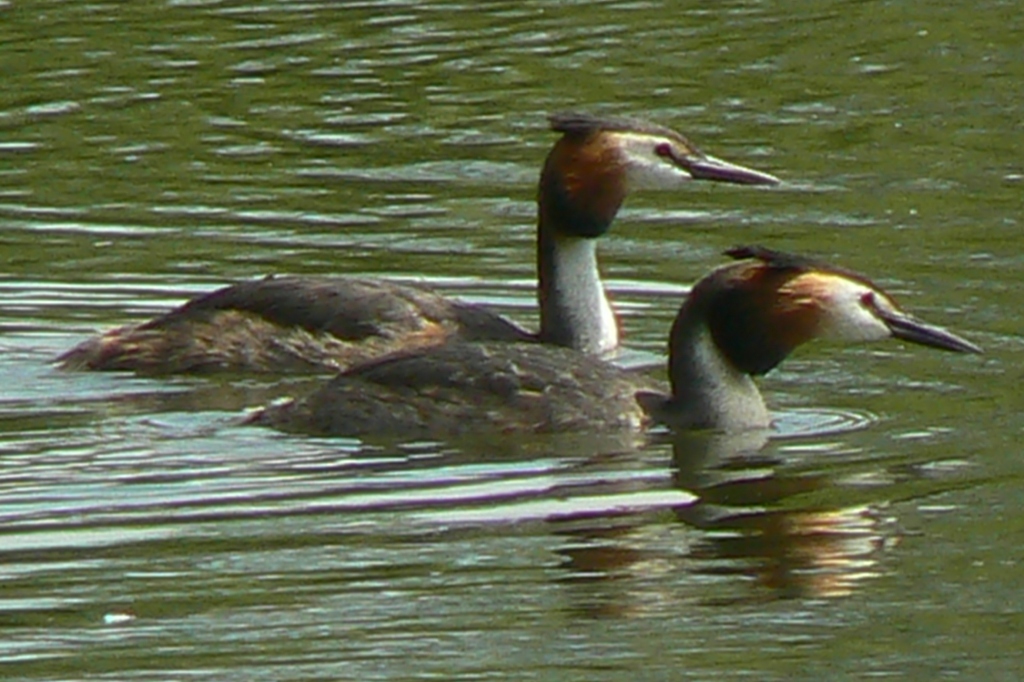
The winter plumage loses the coloured parts of the head, which becomes almost all white. The crest disappears leaving a smaller flat top to the head.


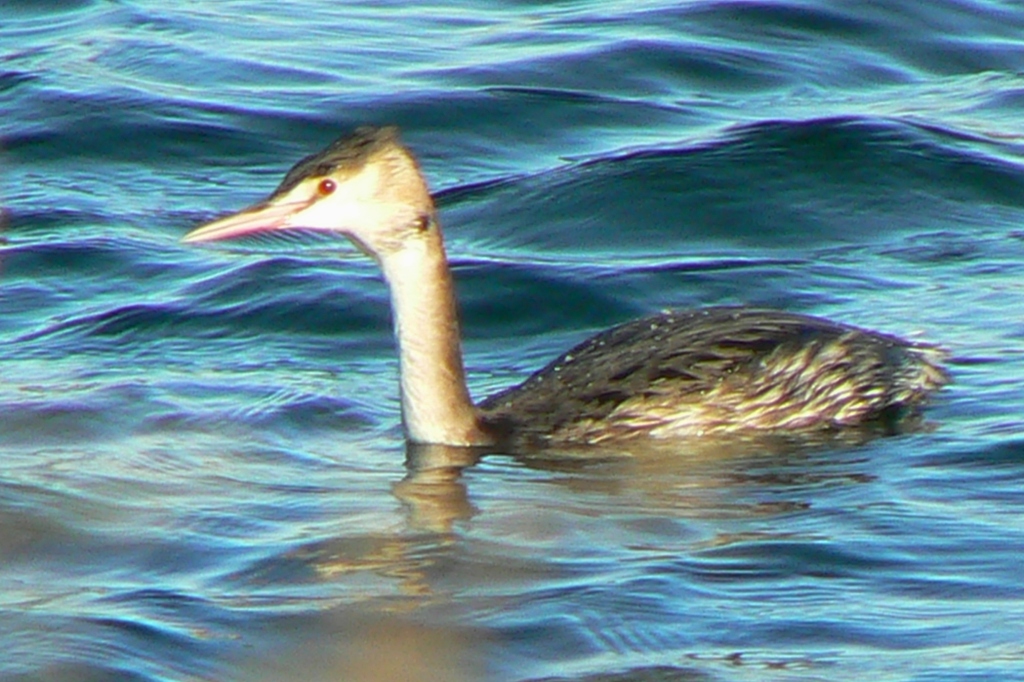



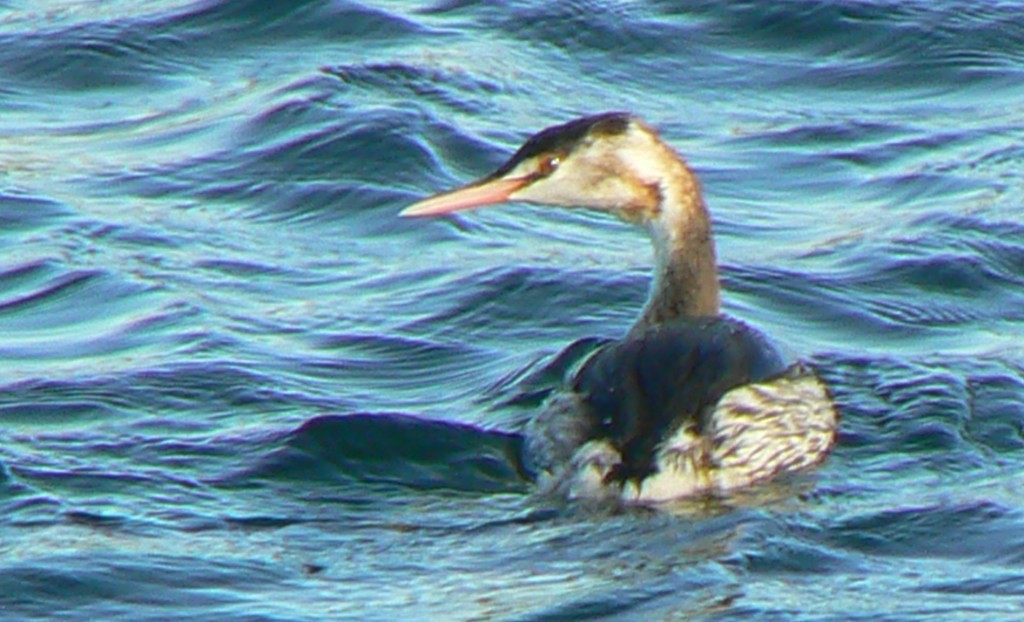
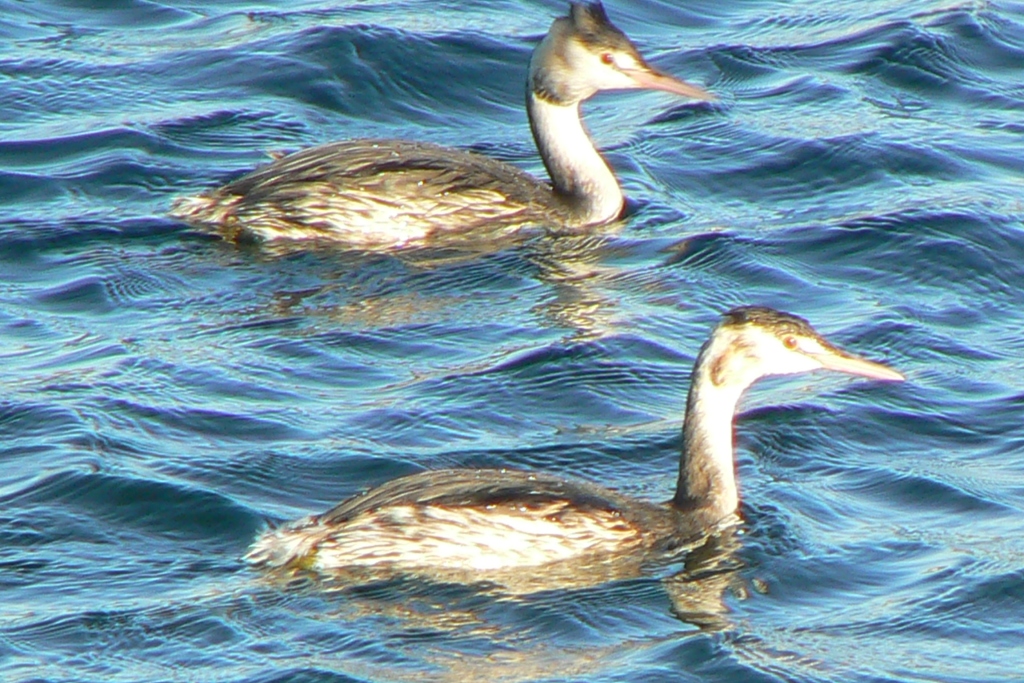
They feed mainly on fish obtained by diving, but will also eat small invertebrates and amphibians.

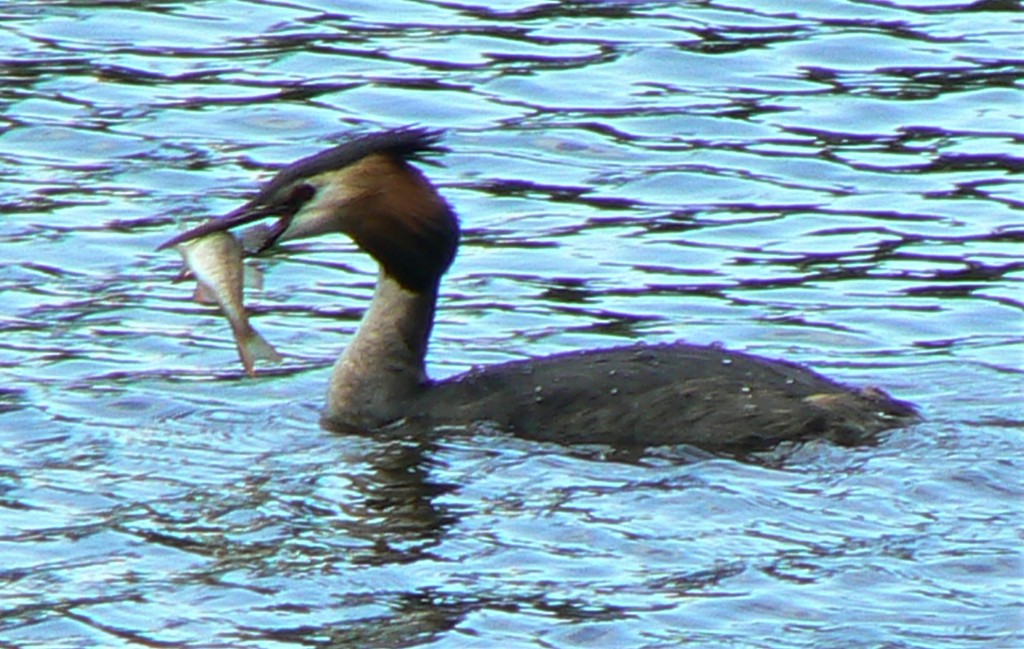
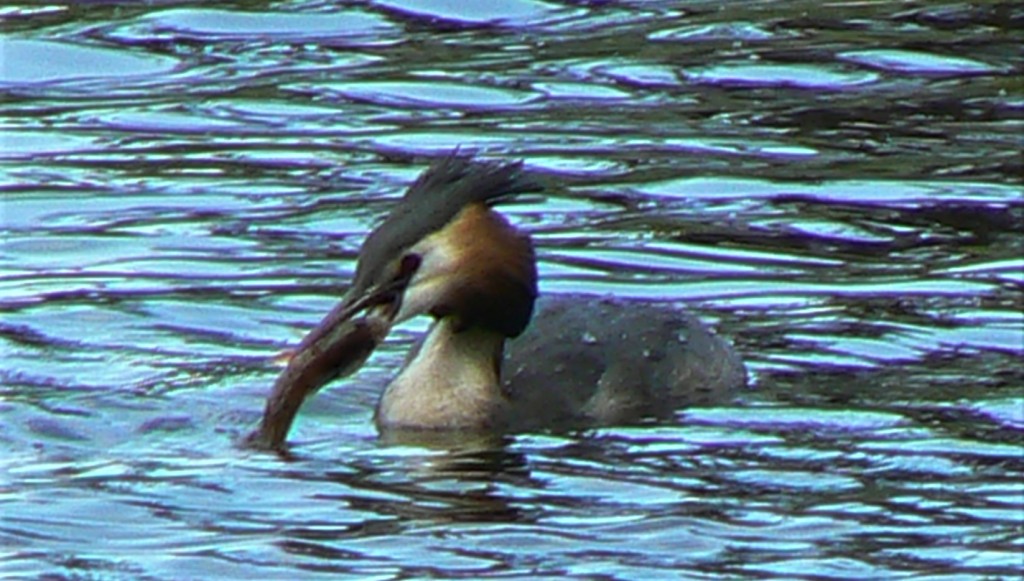
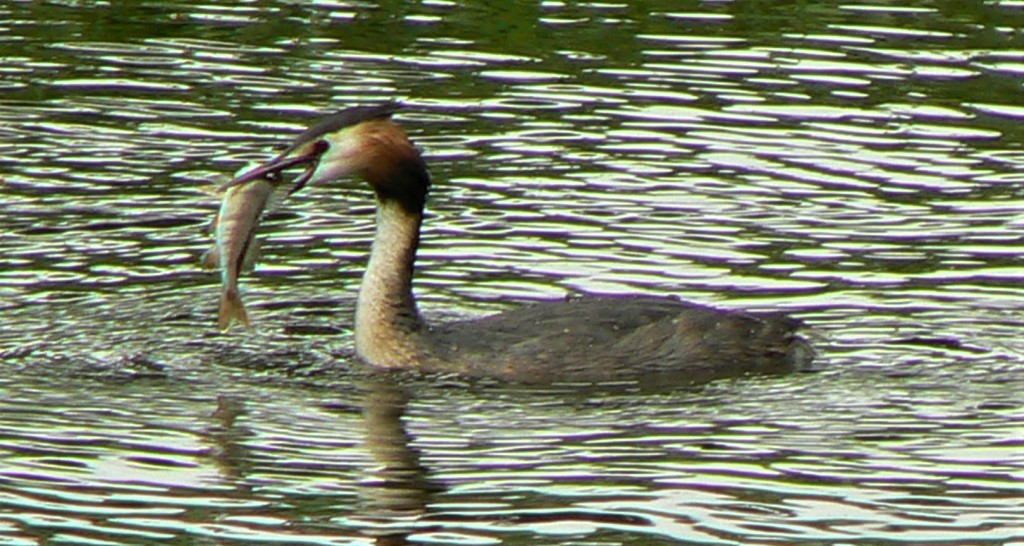
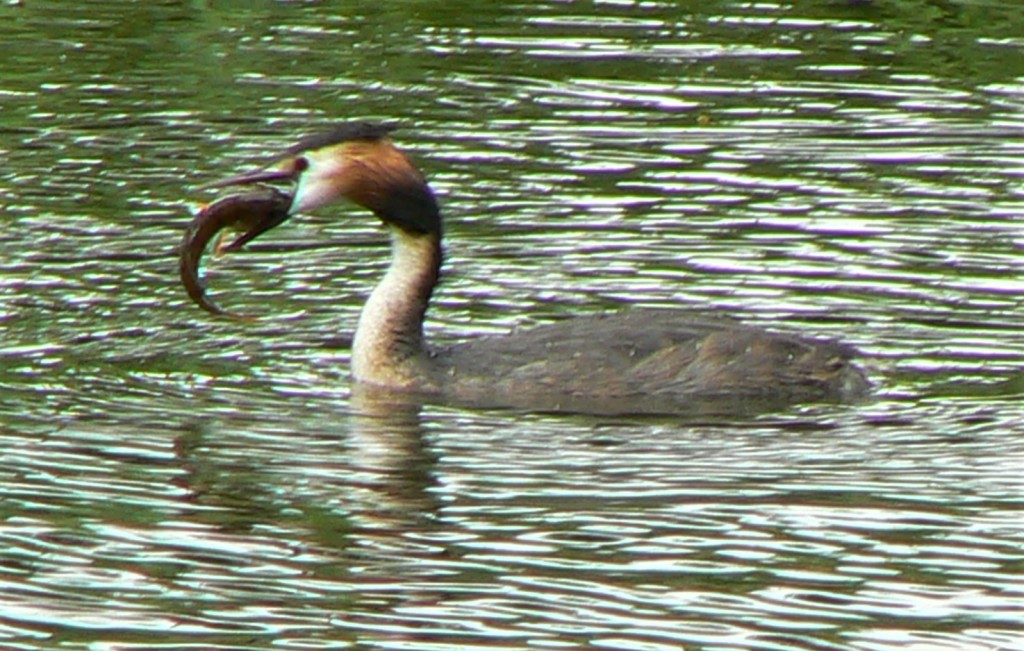
They are monogamous and will reform their pair bonds each year in a mating display, which is like synchronized dancing on the water. They build a nest by the water’s edge and generally only ever leave the water for the nest.
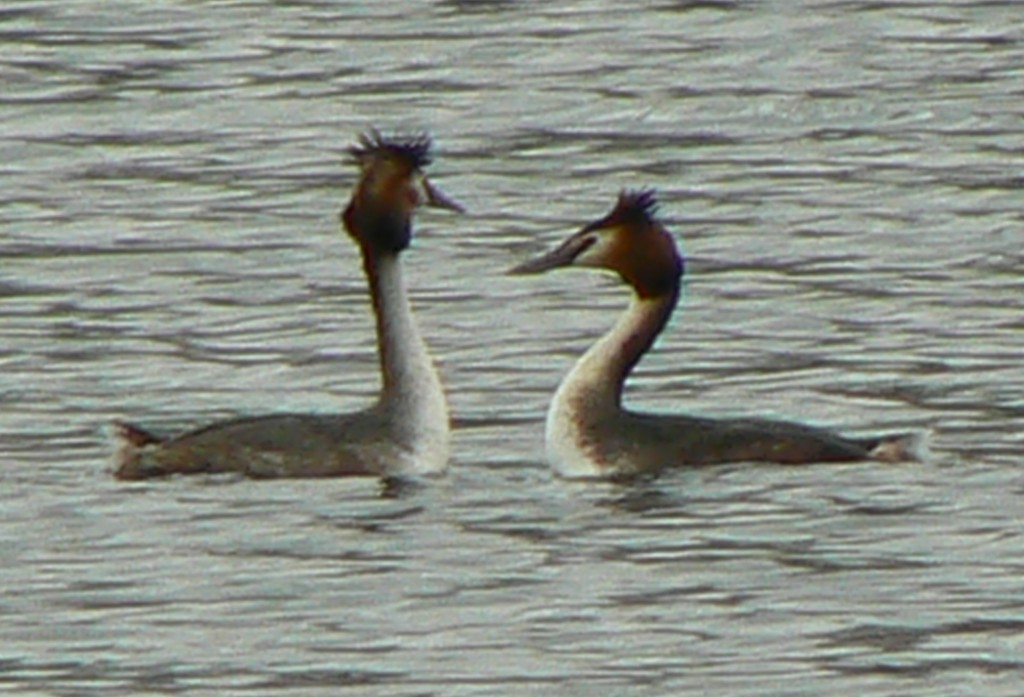
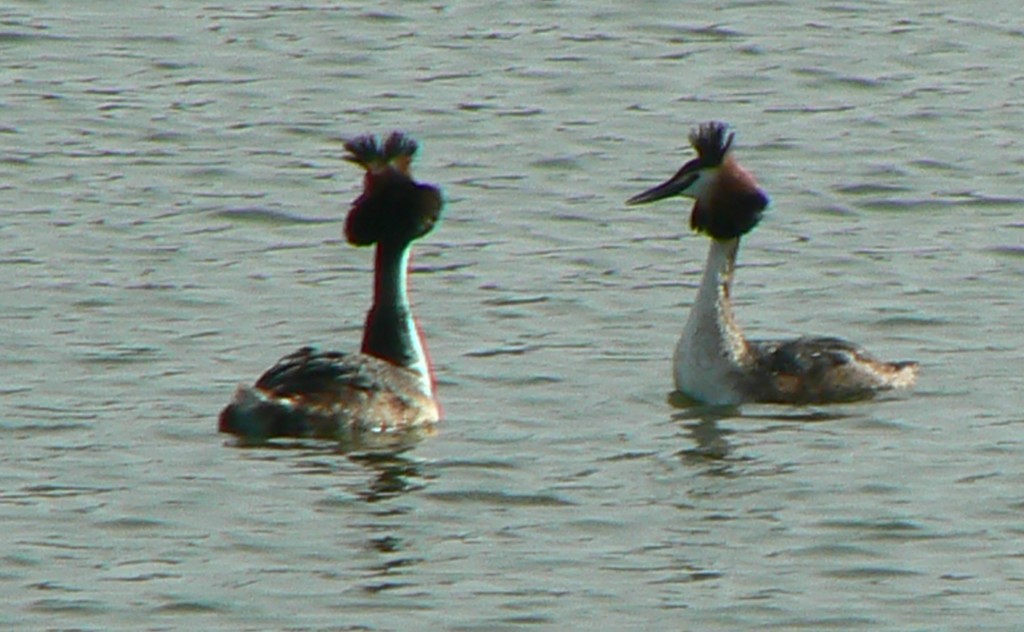


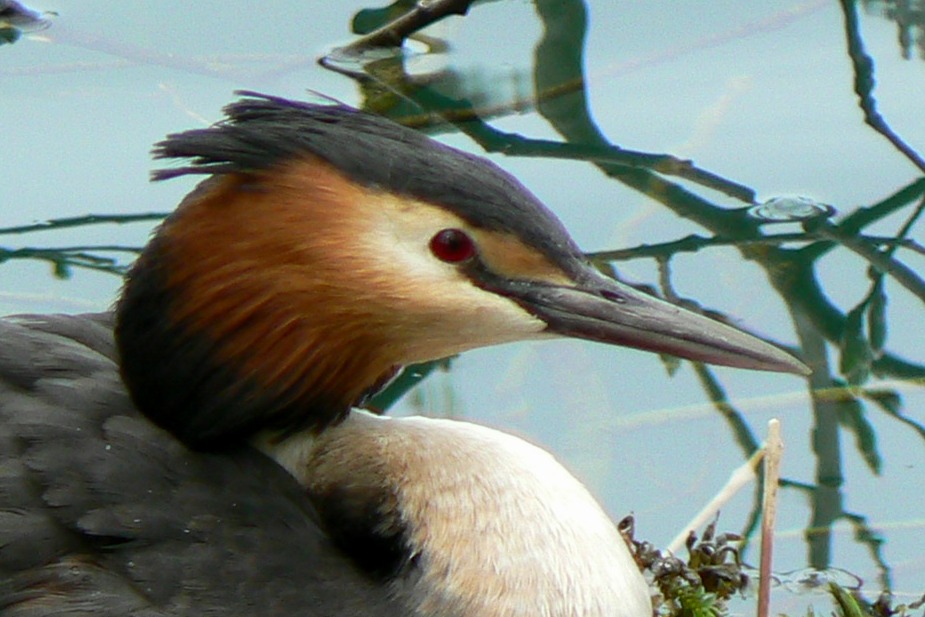
Very young birds have a distinctive appearance with black-and-white stripes on their bodies. From an early age they are carried on the backs of a parent who teaches them by diving.
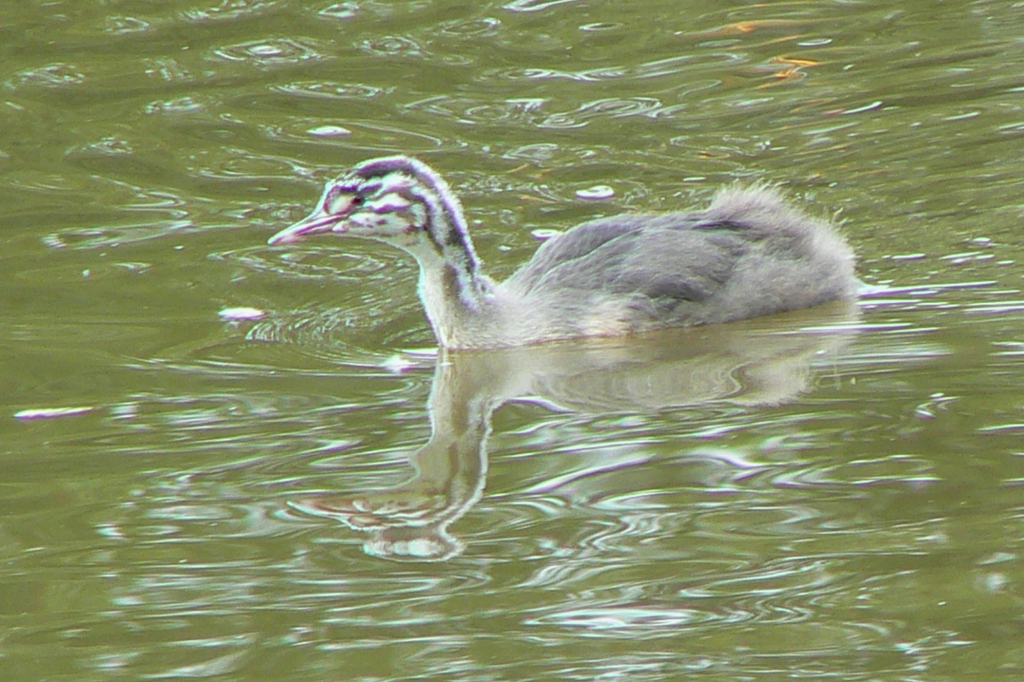
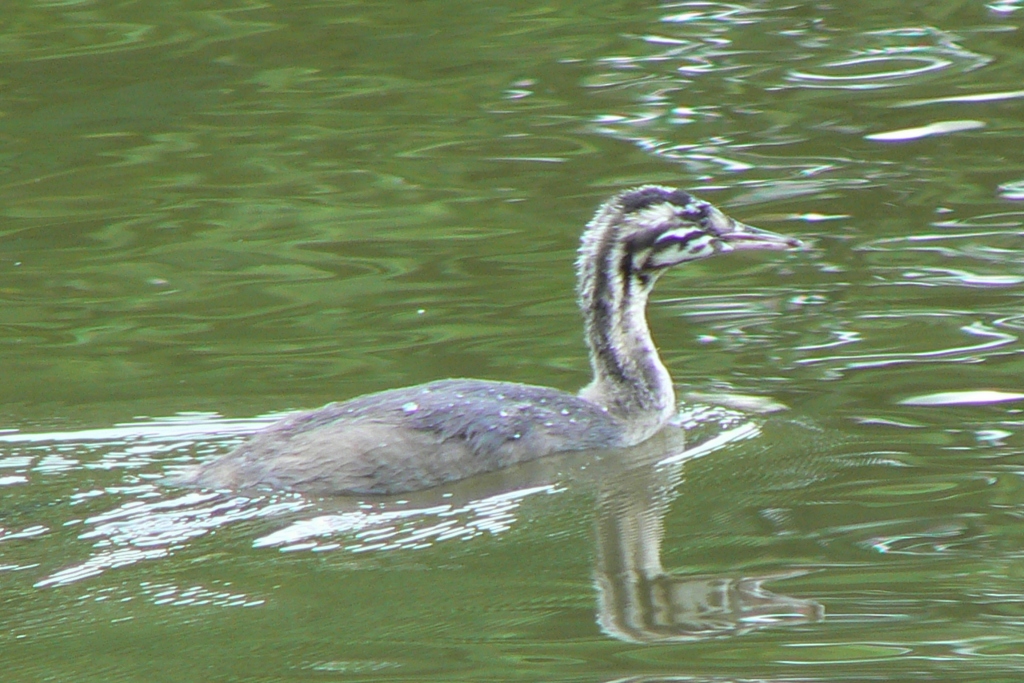
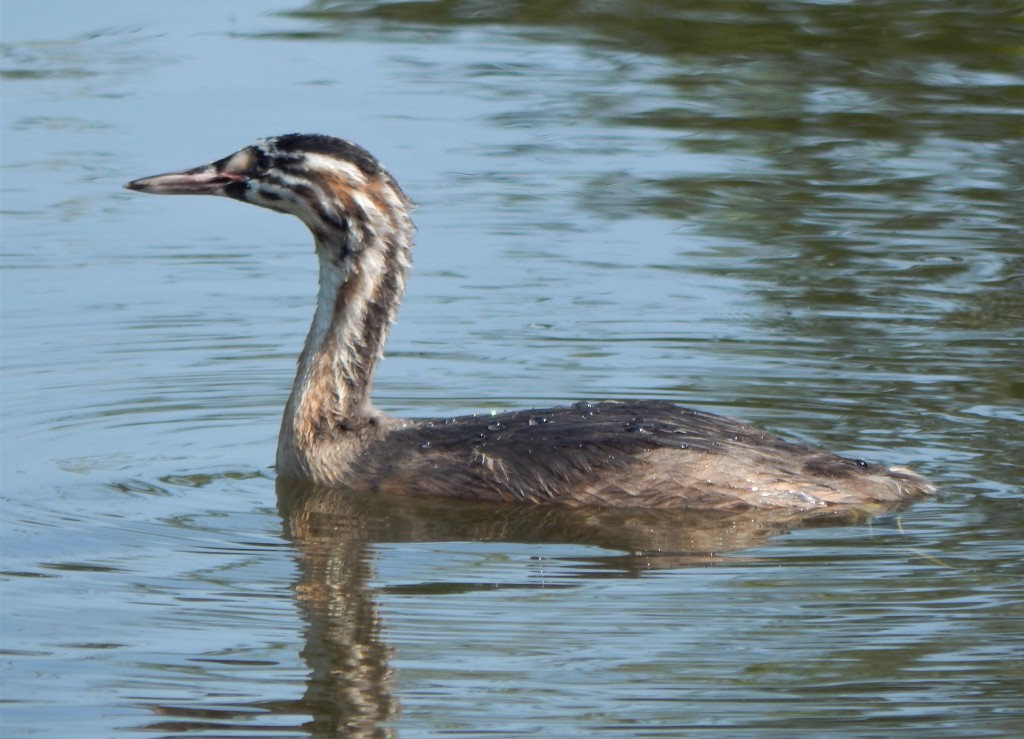
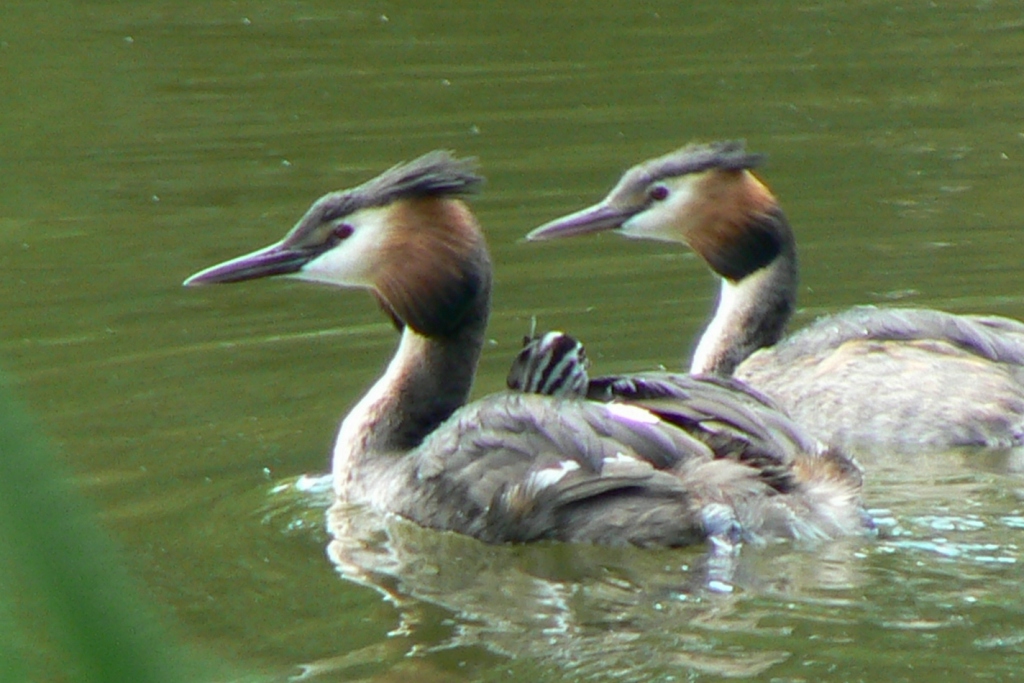
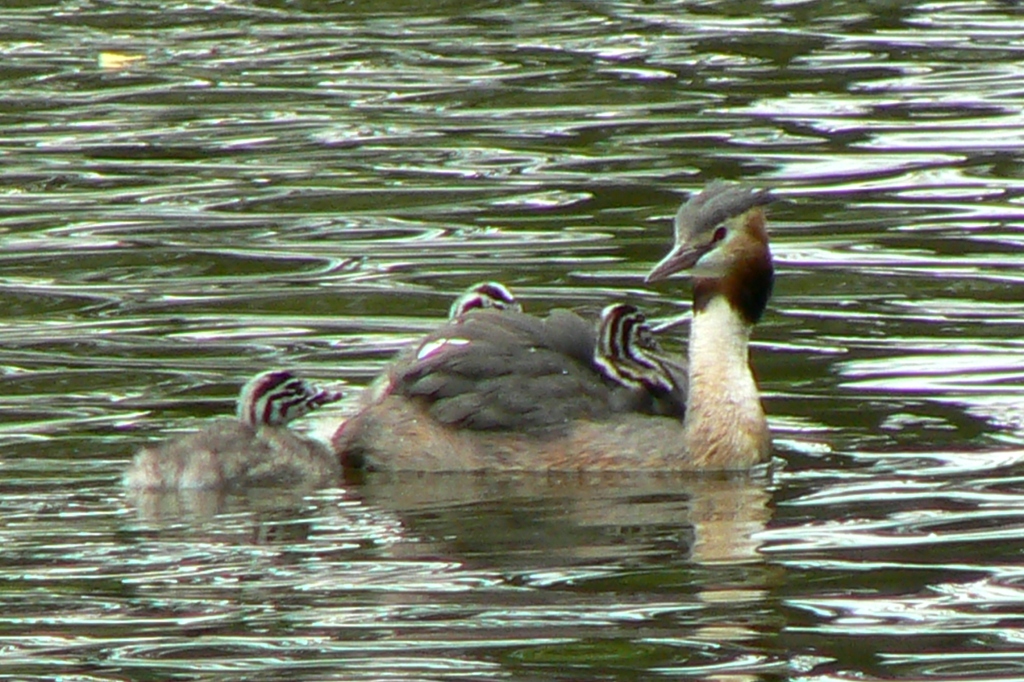
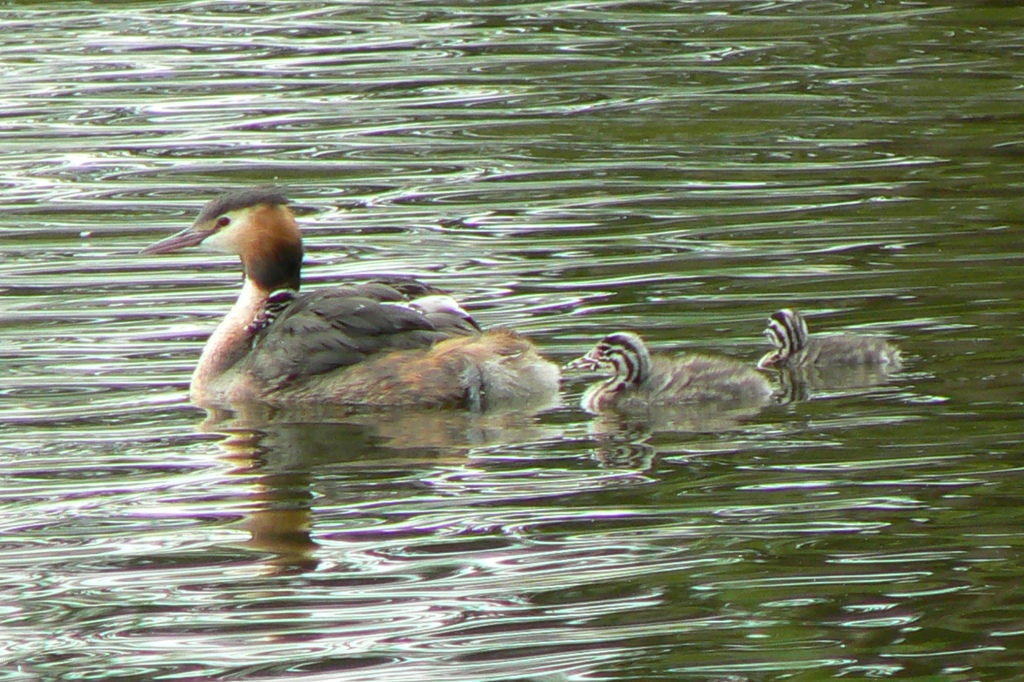
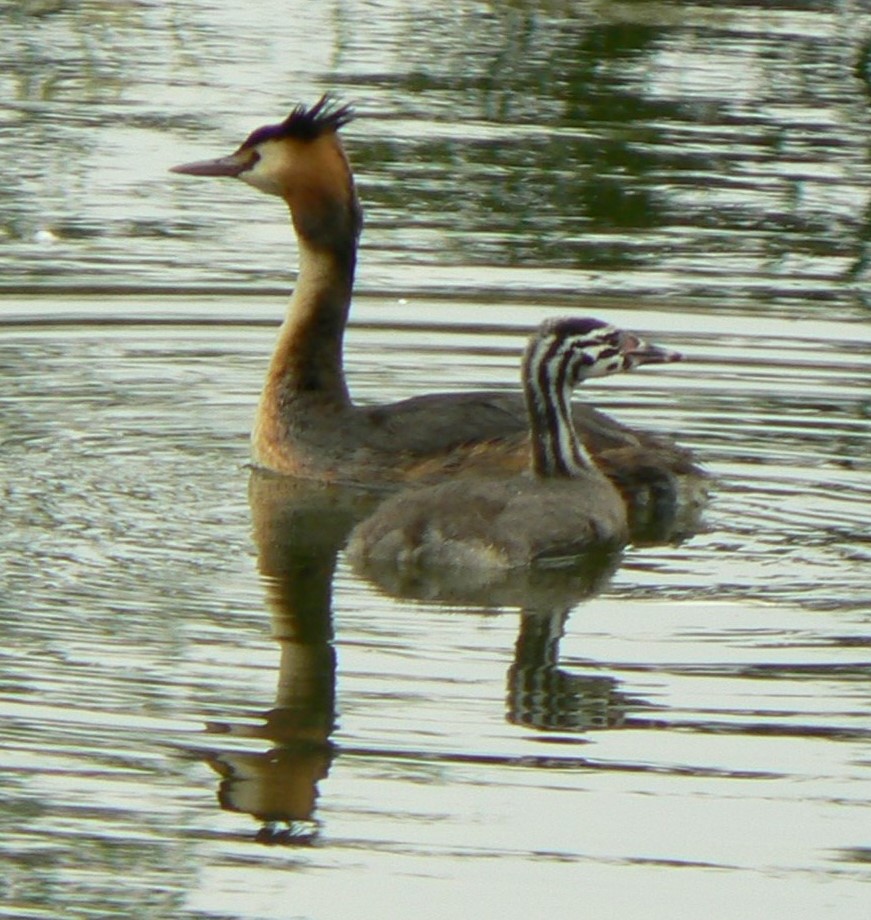
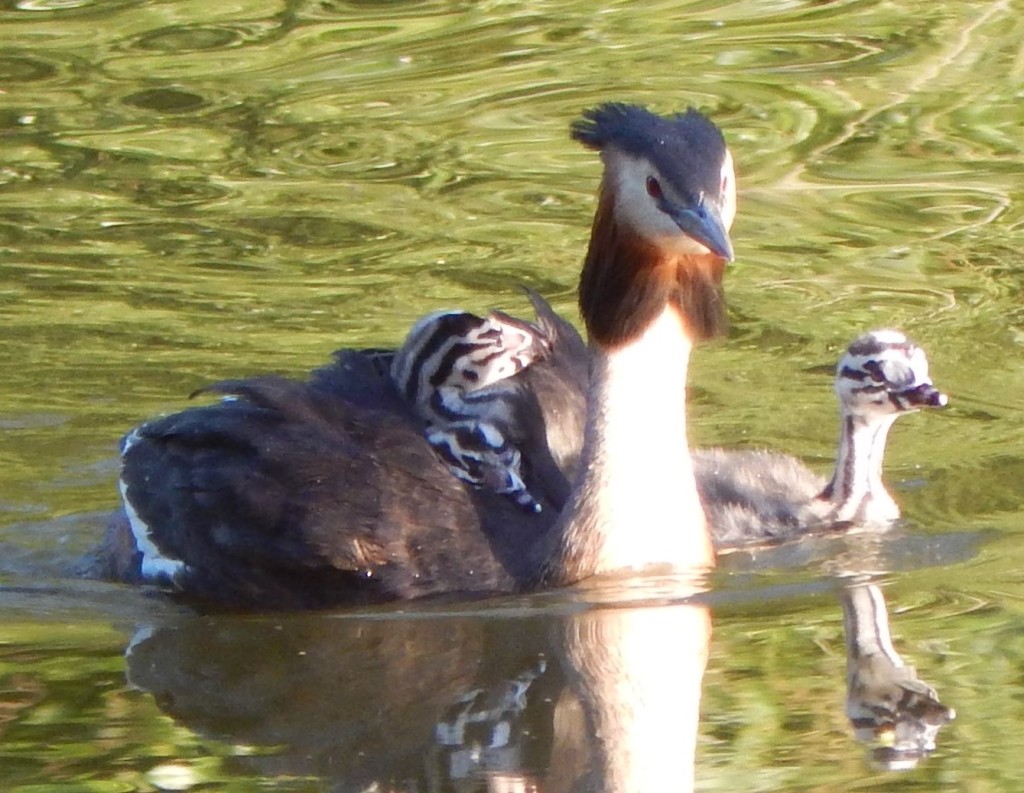

As they grow the stripes disappear and they turn to the normal winter plumage.

Habitat and use
The summer range of this bird covers almost all of Eurasia except the Arctic North. In the extreme west of its range, including the UK, it is generally resident, but for the rest of its range it moves south in winter – to several locations including South Africa and Australia. That’s what the books say but our local pair disappears every winter.
In Victorian times this bird was almost hunted to extinction in the UK for its head feathers, which were used for ladies’ hats and other clothing. The Royal Society for the Protection of Birds (RSPB) was established in 1889 to protect this species and [122] Little Egrets and other foreign species.
Other Notes
Since I took up birdwatching about fifteen years ago, I have always regarded the Great Crested Grebe as relatively common. Our local park has two lakes and a pair of Grebes are there every summer raising one or two broods of chicks. I think they are territorial and I see them on other ornamental lakes – but never more than a single pair on each lake.

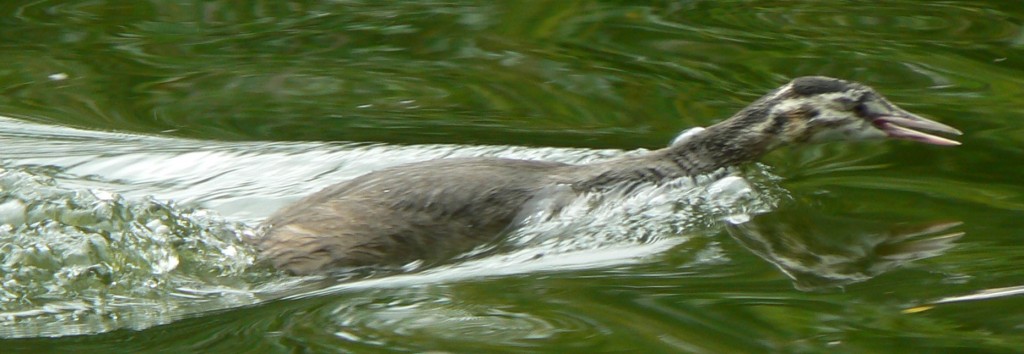


See also
[335] The Little Grebe is the only other Grebe you are likely to see. It is, unsurprisingly, much smaller than Podiceps cristatus.
